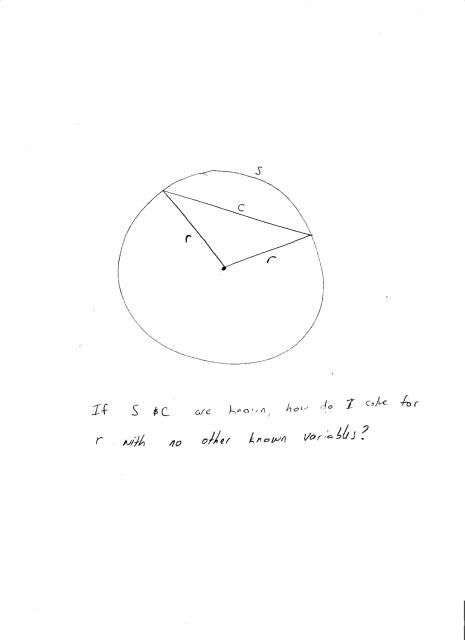Hello, This is my first time visiting this site and possibly my first time asking for math help. I use to be a math wiz but it has been sooooo long since I have had to apply geometry and trig that I have forgot most of it. I had the calculus series in college for an easy elective so in response to my question, you can assume that I am not a novice.
Here is my question. On a circle, I know the arc length and the cord length and I want to solve in terms of radius. Is this possible?
This question arises from a motorcycle application. I am trying to find a fender that is similar radius as my tire, howevere the fender manufactures do not give you the radius of the fender. They are always described in terms on arc length and cord length. Any help would be greatly appreciated.

Here is my question. On a circle, I know the arc length and the cord length and I want to solve in terms of radius. Is this possible?
This question arises from a motorcycle application. I am trying to find a fender that is similar radius as my tire, howevere the fender manufactures do not give you the radius of the fender. They are always described in terms on arc length and cord length. Any help would be greatly appreciated.


